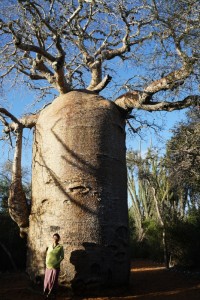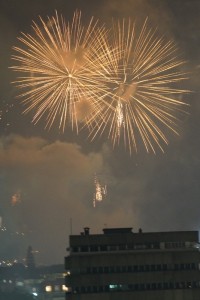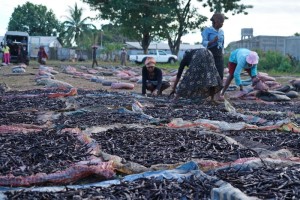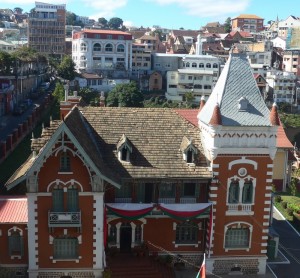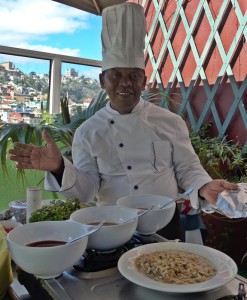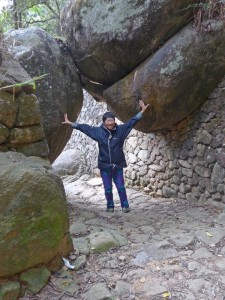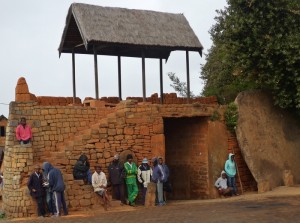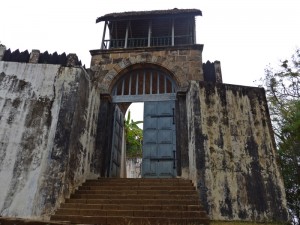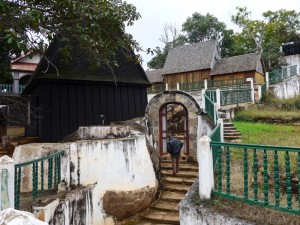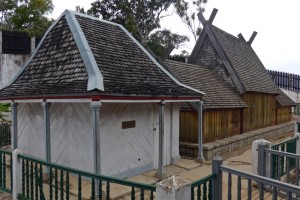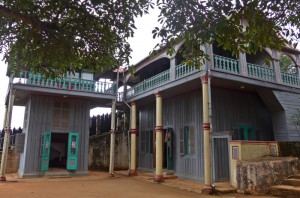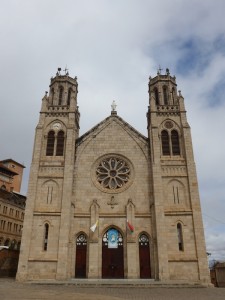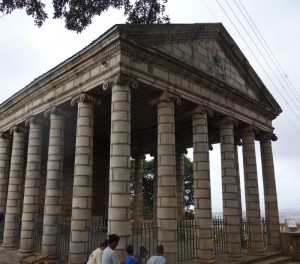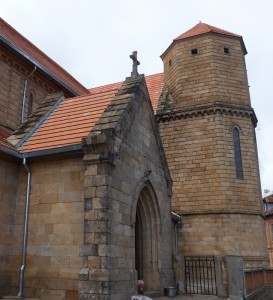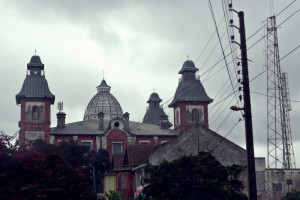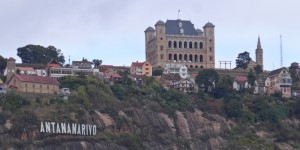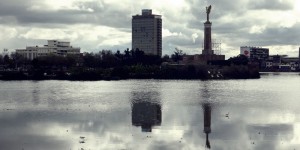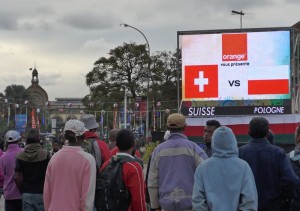June 22 – 26, 2016: Antananarivo
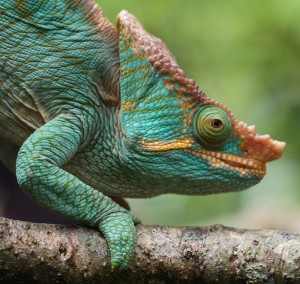 |
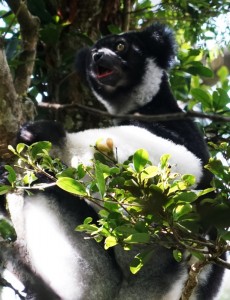 |
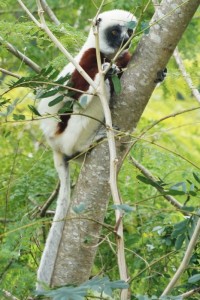 |
Madagascar, the world’s fourth largest island with an area of 592,800km², was once part of the ancient super-continent Gondwanaland and broke away from the Indian subcontinent about 88 million years ago. Owing to its isolation, Madagascar is a biodiversity hotspot with over 90% of its wildlife found nowhere else on earth. Henceforth, it is considered the ‘eighth continent’ and a paradise for nature lovers.
Kingdom of Madagascar– Human settlement on present day Madagascar occurred between 350BC and AD550 by Austronesian peoples arriving on outrigger canoes from Borneo. Around AD1000, Bantu migrants arrived from East Africa. Other groups arrived over time. While principalities of different tribes were ruled by chieftains, the Kingdom of Madagascar led by a series of Merian nobles was established between 1540 and 1897. Merian King Andrianampoinimerina (1787-1810) reunited Imerina in 1793 and moved his capital from Ambohimanga to Rova Antananarivo (Tana) and rapidly expanded his rule over neighbouring principalities. His son King Radama I (1810-28) brought the entire island under his control and was recognised by the British government as King of Madagascar. Radama I was succeeded by Queen Ranavalona I (1826-61) who prohibited the practice of Christianity and pressed foreigners to leave. From 1861 to 1897, the kingdom was ruled by Radama II, son of Queen Ranavalona I (1861-63) followed by his Queen Rasoherina (1863-68), Queen Ranavalona II (1868-83) and Queen Ranavalona III (1883-97). Rainilaiarivony, the Prime Minister from 1864 to 1895 had married Queen Rasoherina, later Queen Ranavalona II and Queen Ranavalona III.
Colonial Period (1897-1960)- The French began to consolidate its power in the region since early 19th century. In 1883, the French invaded Madagascar following the first Franco-Hova War and the northern port town of Diego Suarez was ceded to France. In 1890, the British accepted the full formal imposition of French protectorate on the island but the Madagascar government refused to acknowledge the French authority. In 1894 and 1895, French bombed and occupied Toamasina on the east coast and Mahajanga on the west coast respectively. French military moved onto Tana and Queen Ranavalona III finally surrendered. France annexed Madagascar in 1896 and declared it a colony in 1897. Under the French rule, plantations were established for the production of a variety of export crops. Slavery was abolished in 1896. Roads and railways were built and education became mandatory between the ages of 6 to 13.
![map_of_madagascar[1]](http://www.sarahontheroad.hk/wp-content/uploads/2016/06/map_of_madagascar1.jpg) |
Colonial Period (1897-1960)- The French began to consolidate its power in the region since early 19th century. In 1883, the French invaded Madagascar following the first Franco-Hova War and the northern port town of Diego Suarez was ceded to France. In 1890, the British accepted the full formal imposition of French protectorate on the island but the Madagascar government refused to acknowledge the French authority. In 1894 and 1895, French bombed and occupied Toamasina on the east coast and Mahajanga on the west coast respectively. French military moved onto Tana and Queen Ranavalona III finally surrendered. France annexed Madagascar in 1896 and declared it a colony in 1897. Under the French rule, plantations were established for the production of a variety of export crops. Slavery was abolished in 1896. Roads and railways were built and education became mandatory between the ages of 6 to 13.
1960-Now– Independence movements led to the Malagasy Uprising in 1947 which subsequently paved the way towards peaceful independence. The Malagasy Republic was proclaimed on October 14, 1958 with full independence on June 26, 1960. Nonetheless, the young nation has a tumultuous period since independence which has been marked by numerous popular protests, disputed elections, military coups, assassination and social unrest. Prolonged political instability, damage to infrastructure caused by bombs and arson and corruption have seriously impeded economic development.
People– The estimated population of Madagascar today, according to the World Bank, is over 24 million with anannual growth rate of 2.8%. Some 40% of the population is under the age of 15. DNA research has revealed that the genetic makeup of the average Malagasy person constitutes an approximately equal blend of Southeast Asian and East African genes. Malagasy people are divided into 18 ethnic sub-group with Merina of Central Highlands comprising the largest group (26%)followed by the coastal people of Betsimisaraka (15%), Tsimihety and Sakalava (6% each).The majority of the population follows Christianity as well as traditional beliefs. Malagasy and French are both official languages.
Biodiversity– As a result of long isolation from neighbouring counties, Madagascar is home to an abundant of plants and animals that are found nowhere else on earth. The island has around 170 palm species and 165 of them including the traveller’s palm are endemic. As at 2012, there were officially 103 species and subspecies of lemurs, a clade of strepsirrhine primates endemic to madagascar evolving independently, did not give rise to monkeys and apes. They range in weight from 30 grams mouse lemur to the 9kg indri.
The island is also home to two-thirds of the world’s chameleon species. But its wildlife and nature are endangered by human activity: it has already lost 90% of the original forest since arrival of human some 2,350 years ago. Traditional slash-and-burn agricultural practice, population growth, habitat destruction and hunting have threatened endemic species.
Economy– Madagascar has abundant natural resources. Agriculture (including raffia), fishing and forestry are mainstays of the economy. It is the world’s principal supplier of vanilla, cloves and ylang-ylang and has the world’s largest reserves of ilmenite (titanium ore). It has gas and oil and important reserves of chromite, coal, iron, cobalt, copper and nickel. Various types of precious and semi-precious stones are mined: half of the world’s supply of sapphires which were discovered near Ilakaka in the late 1990s comes from Madagascar.
Export revenue is mainly derived from the textile industry, fish and shellfish, vanilla, cloves and other foodstuffs. Economic development has been hampened by political instability, corruption, crimes and poor infrastructure. This large country had 7,700km paved roads, 854km railways and 432 of navigable waterways in 2010. Estimate of GDP(PPP) and per capita for 2016 is $37.635 billion and $1,510. About 90% of the population live on less than $2 a day.
Given its biodiversity, relatively unspoilt natural scenery, people and culture, Madagascar boasts threeWorld Heritage Sites namely the Forests of Atsinanana, Marojejy, Ranomafana, Zahamena, Andhahela, and Andring, theTsingy of Bemaraha and the Royal Hill of Ambohimanga. Eco tourism has been part of the development strategy and the country attracted a record number of some 350,000 tourists in 2008. But the number plunged to 180,000 following the popular uprising in 2009.
My Travel Plan
Madagascar, one of the poorest countries in the world, is not considered an easy and safe destination. Given its size and poor infrastructure, I decided to set aside about a month for this country i.e. from June 22 to July 20. I would spend half of the time in a group tour and the rest travelling on my own possibly by hiring a 4WD with a driver to visit the west and northern Madagascar. At first, I picked Exodus’s 15-day ‘Highlights of Madagascar’ tour with several hiking days in the central and southern parts from July 6 to 19. When I discovered an acquaintance Joyce would be taking the ‘Madagascar Discovery’ (June 26 – July 11) which would cover the Baobab Forest near Morondava and the Tsingy of Bemaraha in West Madagascar, I decided to switch at an extra cost of £600. Owing to last minute change of plan, the time reserved for my own travel was chopped into two parts i.e. four days before (June 22-25) and nine days after the tour (July 11-19) before leaving for Johannesburg on July 20.
4 Days in Antananarivo: June 22 -25, 2016
June 22 Wednesday: La Réunion – Antananarivo, Madagascar
I landed around noon at the airport in Tana. It took me a while to go through immigration which is slow. Once I came through the exit door, I was swarmed by men who wanted to take me to change money or a taxi for a tip. I told them to leave me alone. After comparing rates offered by various shops and banks, I exchanged £100 for 440,000Ariary (Ar).
The next task was to find my way to Hotel Belvedere in Isokaly (located next to the tomb of Prime Minister Rainihara), the meeting point of the Exodus group on June 26. To make things simple, I stayed in the same hotel which cost me €32 a day (same rate for single and double occupancy). The taxi costs 50,000Ar while a shuttle bus charges 10,000Ar. As a backpack at heart who travels for life, I am not in a hurry and can afford the time to travel on the slow lane. I had to wait for half an hour on the bus while the driver stood by the door stopping local men from getting into the bus begging for money. They all said they had no money and had young children. I am always annoyed to hear this: they can have as many wives/girlfriends they wish without children. If they bring a new life to the world, they as parents must shoulder their responsibilities giving their children properly care and education.
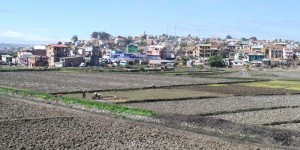 The ride to hotel is an eye-opening as well as depressing experience. Tana, a sprawling city built on 12 sacred hills with a population of 2-3 million, is one of the most chaotic, messy, smelly and dirty capitals I have ever visited. The road from the airport to the city centre is mostly two-lane clogged with traffic. The bus moved at a snail pace thus giving me an opportunity to look at the streetscape and the people. Most of the cars possibly 30-50 years old would fail to pass a road-worthiness test. The air is bad filled with the smell of diesel. The area closer to the airport seems to be better developed with newer buildings. When the bus approached the centre, I found more unsightly developments and buildings/structures with poor or no maintenance on both sides of the road. Several expansive paddy fields are still found just outside the city centre. I saw zebu (similar to an oxen with horn and a humped back) walking or pulling a cart along the roadside.
The ride to hotel is an eye-opening as well as depressing experience. Tana, a sprawling city built on 12 sacred hills with a population of 2-3 million, is one of the most chaotic, messy, smelly and dirty capitals I have ever visited. The road from the airport to the city centre is mostly two-lane clogged with traffic. The bus moved at a snail pace thus giving me an opportunity to look at the streetscape and the people. Most of the cars possibly 30-50 years old would fail to pass a road-worthiness test. The air is bad filled with the smell of diesel. The area closer to the airport seems to be better developed with newer buildings. When the bus approached the centre, I found more unsightly developments and buildings/structures with poor or no maintenance on both sides of the road. Several expansive paddy fields are still found just outside the city centre. I saw zebu (similar to an oxen with horn and a humped back) walking or pulling a cart along the roadside.
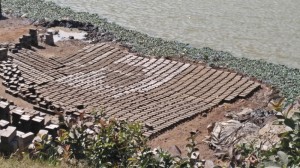 |
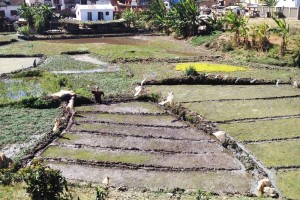 |
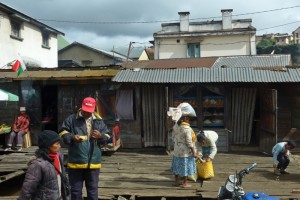 Poverty is strikingly visible with open sewage, garbage and shoeless children and adults in tattered and dirty clothes roaming around. My heart sank when watching a few people crawling in garbage containers or dumping grounds searching for things of value. Few men were pissing by the roadside as most of the dwellings have no toilet and one has to pay for use of public toilets. Hawkers sell anything one can imagine: a typical scene in Africa and developing countries.
Poverty is strikingly visible with open sewage, garbage and shoeless children and adults in tattered and dirty clothes roaming around. My heart sank when watching a few people crawling in garbage containers or dumping grounds searching for things of value. Few men were pissing by the roadside as most of the dwellings have no toilet and one has to pay for use of public toilets. Hawkers sell anything one can imagine: a typical scene in Africa and developing countries.
The short ride took over an hour. As soon as I stepped off the bus, a man in red uniform came over to carry my suitcase to the hotel which is tucked away from the main street. I gave him a small tip and he gave me a broad smile. A young Canadian engineer living and working in Madagascar whom I met in La Réunion has warned that Tana is not a safe place. Even he would not go to bad neighbourhoods or take with him valuables including camera and money. The hotel receptionist gave me the same advice immediately upon arrival and suggested me leave valuables in the safe. I took her advice.
It’s my birthday today. The first thing I did was to have a good lunch in the hotel restaurant. I had my first taste of zebu which meat is tasty and tender. It’s winter here with temperature dropping below 10°C in the early morning and after sunset. After lunch, I put on my oversized wind-breaker so that I could put my purse and a mobile phone in the pocket. I spent a few hours exploring the neighbourhood which is supposed to be safe. I followed the main street down the hill and found a nice souvenir shop at the bottom of the junction. I went in and was greeted by an elegant owner who speaks English. She told me about the worsening situation in the country which has been ruined by incompetent government, corruption and instability. People are poor and the cost of living is high. I told her my plan to travel to the north. She said she would ask around to see whether someone could take this job. Anyway, she found a taxi driver who would take me to the Royal Hill of Ambohimanga on Friday for 60,000Ar for a day. I said I would consider and revert the following day.
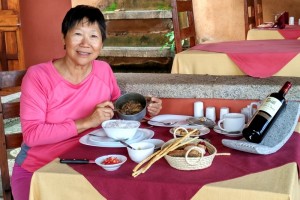 |
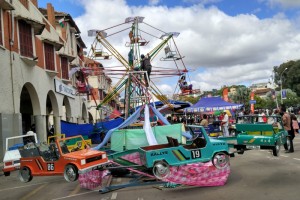 |
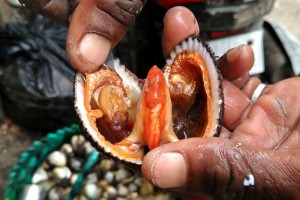 |
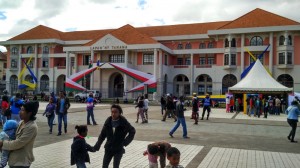 |
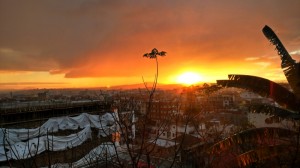 Then I saw many types of street food including BBQ chicken, sausage, fish, dumpling, banana etc. I also found several places selling noodles in chicken soup. It is nice to have noodles on one’s birthday: I brought a bowl for 500Ar and found it tasty. Then I walked back to the hotel and watched sunset from the terrace. I skipped dinner as I had already eaten too much. I spent the evening working on my website.
Then I saw many types of street food including BBQ chicken, sausage, fish, dumpling, banana etc. I also found several places selling noodles in chicken soup. It is nice to have noodles on one’s birthday: I brought a bowl for 500Ar and found it tasty. Then I walked back to the hotel and watched sunset from the terrace. I skipped dinner as I had already eaten too much. I spent the evening working on my website.
June 23 Thursday: Travel Planning & Research
I had thought of taking a side trip from June 23 to 26 before joining the group tour. But I dropped the idea not because there’s a lot to do in Tana. The roads are simply too bad and it would be difficult and probably not safe to travel long distance on my own in bush taxi. If I hired a car and a guide, it might be too expensive and not worthwhile for a short period. So I would take a rest and tried to soak in the festive atmosphere of Tana during the National Day celebration. The main square outside the Town Hall and the boulevard were all draped with the tricolor national red, white and green national flag and had been turned into a pedestrian zone where food stalls, several stages for performances, big TV screens, playgrounds with carousals and mechanic rides for kids had been set up. There were also many stalls selling clothes, toys, souvenirs etc.
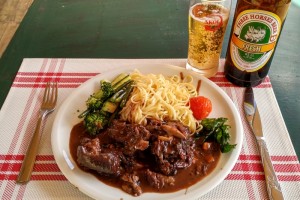 Today, I set off with the aim to work out a travel plan from July 11 to 19. I shopped around stopping by a few travel agents that scatter around the main square. The easiest way I conclude is to fly to Nosy Be, travel to Diego by road and fly back from Diego to Tana. The airfare would be about US$400-450. After having a nice lunch at the cafe in the restored train station, I walked back to the souvenir shop with a view to finding out whether the lady had found someone to drive me to the north and the cost. Just before arriving at the shop, I suddenly spotted a small sign ‘Madagascar Tourism Expeditions – Nature & Discovery‘ (www.madagascar-tourism-expeditions.com) outside an iron door. Wow- this’s what I have been looking for! I opened the door, walked through a narrow alley and found myself in a garden and an old house. A separate staircase led me to an office where I met Hanta, managing director and owner of this small agency.
Today, I set off with the aim to work out a travel plan from July 11 to 19. I shopped around stopping by a few travel agents that scatter around the main square. The easiest way I conclude is to fly to Nosy Be, travel to Diego by road and fly back from Diego to Tana. The airfare would be about US$400-450. After having a nice lunch at the cafe in the restored train station, I walked back to the souvenir shop with a view to finding out whether the lady had found someone to drive me to the north and the cost. Just before arriving at the shop, I suddenly spotted a small sign ‘Madagascar Tourism Expeditions – Nature & Discovery‘ (www.madagascar-tourism-expeditions.com) outside an iron door. Wow- this’s what I have been looking for! I opened the door, walked through a narrow alley and found myself in a garden and an old house. A separate staircase led me to an office where I met Hanta, managing director and owner of this small agency.
I trust my instinct: Hanta is helpful, knowledgeable and honest. We spent over an hour discussing the route and cost. Fuel is expensive and a 4WD consumes lot of petrol. Eventually, she drew up a tentative itinerary and made me an offer of US$455 for a 4WD and a driver-guide from July 11 to 19. I would consider and revert the following afternoon. As soon as I left her office, I knew her offer was reasonable though not cheap for a single traveller. Then I walked across the street to the souvenir shop to inform the lady that she would not need to find me a driver and car.
June 24 Friday: Travel Plan Confirmed
In the morning, I continued my exploration on foot and had a morning coffee in the terrace of Colbert Hotel a popular 4-star hotel for diplomats and businessmen. I enjoy the fantastic view of the upper town and the Rova, and the Anosy Lake.
I followed the main street and walked downhill towards the Place of Independence. Soon I found myself in the frantic central market built during the colonial period with thousands of shoppers, hawkers and stall keepers.
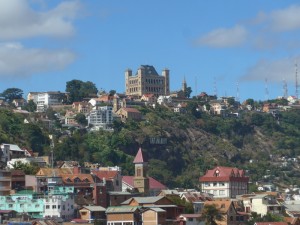 |
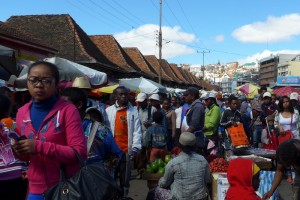 |
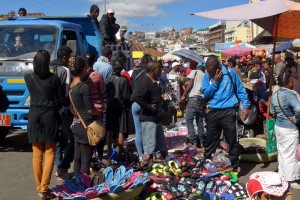 |
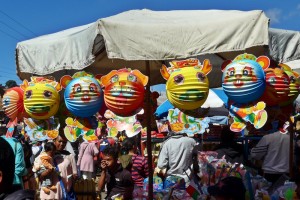 |
Then I took the staircase walking uphill to return the hotel. I took some money from the safe and walked to the tour company to pay a deposit of US$200. Hanta found me a money changer who gave me 3270Ar for US$100 (the best rate I had in Madagascar). She asked me whether I needed a taxi for sightseeing the next day for 50,000Ar. I said I had no plan yet. (I regret for not taking up her kind offer)
June 25 Saturday: Ambohimanga& City Drive
When I got up, I suddenly found myself in a sight-seeing mood as I had no more worry about my travel to the north. I asked the reception for the cost of a taxi to Ambohimangato visit the Royal Hill and Palace. She mentioned 50,000Ar which is similar to what had been mentioned by the tour operator the day before. I therefore asked her to arrange one for me and she wrote down a few places I could visit on a paper. At the bottom, she scribbled down 150,000Ar which totally escaped my attention.
At 8:40am, a taxi driver turned up and led me to his car which is tiny and old (32-year-old to be exact!). As I thought I would be paying 50,000Ar, I was prepared to accept an old taxi with an uncomfortable seat. He tried to point out different townships, embassies and prominent buildings to me on the way to Ambohimanga some 25km from Tana. Fuel is expensive in Tana. I noticed that he often turned off the engine when going downhill or the car was not moving.
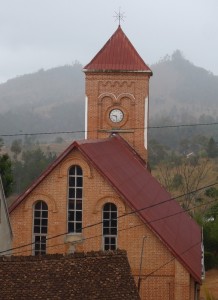 |
I paid the entrance fee (60,000Ar) and spent an hour discovering the place on my own. The Royal Hill of Ambohimanga, a sacred royal site, houses the ancient walled city where the kings of Madagascar lived for the past 500 years. The traditional round mud hut where King Andrianampoinimerina lived in the 18th century has preserved for posterity showing how the Malagasy society was like in ancient times. The palace complex next to the mud hut comprising several buildings with some furnitures is very modest. There are three royal tombs above the complex. The forested parts of the hill are kept for practical and spiritual reasons.
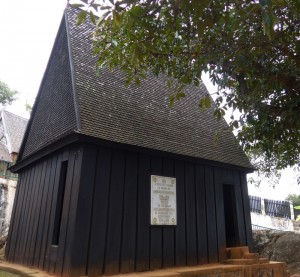 |
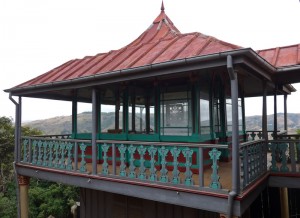 |
|
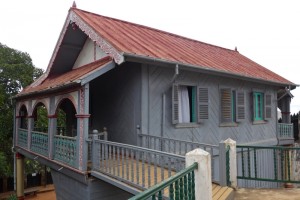 |
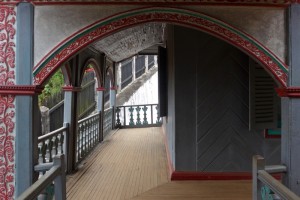 |
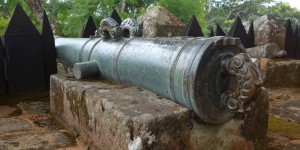 |
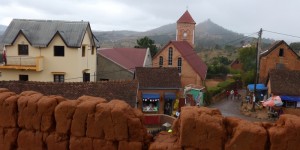 |
At the base of the Royal Hill, the slopes and low land have been cleared for cultivation by the people in support of the monarch. Apparently this was the appearance of a Malagasy feudal society from the 15th century onwards. I walked to the highest point which affords panoramic views with rolling hills, paddy fields and forests. I could also see the built-up area of Tana!
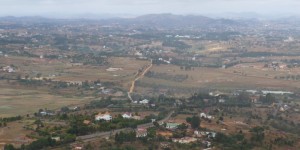 |
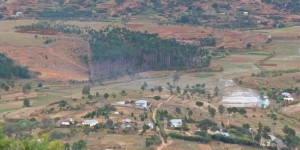 |
It started to drizzle and I left. The driver took me to the upper town and drove past the Anglican Cathedral before stopping at the Catholic Cathedral for a photo. Then we made another stop in front of the Rova but some guys stopped me from taking photos even outside the gate. They insisted I should pay for the photos. When I refused and walked away, one cried out “You are crazy”. I did not know what he meant but felt bad about this incident.
I wanted to visit the Museum of Art and Archaelogy but it was closed. At my request, the driver drove me to Lake Anosy before returning to the hotel around 1pm.
Though I was not entirely happy with his guiding, I handed him 60,000Ar. He looked confused and said the price was 150,000Ar. I was shocked and flabbergasted: his service and the quality of the vehicle would not justify such a price. But I had myself to blame as I did not take note of the amount scribbled on the note. Sensing my annoyance, he gave me 20,000Ar back. Anyway, this is the worst and least value-for-money ride I have ever had! Had I realised the price he was asking, I would not have taken this trip at all. I told the receptionist that the hotel should never have recommended and arranged a ride for its guests in such a vehicle at that price. Will they take note of my complaint and advice? I doubt it!
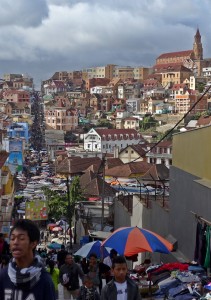 |
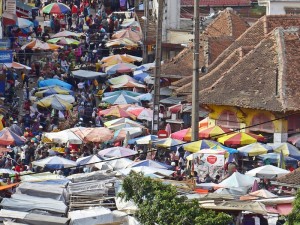 |
In the evening, I watched fireworks at the terrace with a dozen of hotel guests and guests of the hotel owner who was hosting a dinner for his friends.
15-day Madagascar Discovery Tour
Day 1 June 26 Sunday: Group Tour began in Antananarivo
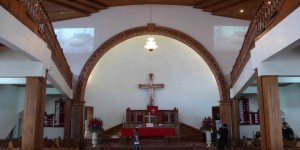 The National Day celebration today began with military parade in the stadium by Lake Anosy in the morning. I intended to go to watch it. On my way, I passed by the church near the hotel which was having a service. Attracted by the singing, I went in and a man immediately got me seated. I was amazed: the church is much bigger than it looks from the outside. Church-goers filled up the hall on the ground floor as well as the upper floor with possibly over 1,000 people. They had their best clothes on for the Sunday service. As I was stuck in the middle of a row far from the side door, I was unable to leave till the gathering stood up to sing again some 20 minutes later. (I later discovered the service lasted some two hours!)
The National Day celebration today began with military parade in the stadium by Lake Anosy in the morning. I intended to go to watch it. On my way, I passed by the church near the hotel which was having a service. Attracted by the singing, I went in and a man immediately got me seated. I was amazed: the church is much bigger than it looks from the outside. Church-goers filled up the hall on the ground floor as well as the upper floor with possibly over 1,000 people. They had their best clothes on for the Sunday service. As I was stuck in the middle of a row far from the side door, I was unable to leave till the gathering stood up to sing again some 20 minutes later. (I later discovered the service lasted some two hours!)
I continued my stroll downhill towards the lake. I was amazed to see many well-kept colonial buildings in white and bright colours. A few have been turned into hotels and eateries. I checked out one of the boutique hotel which is clean and comfortable but still cannot be compared with Hotel Belvedere.
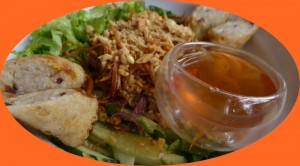 Then I passed by an elegant white house with a garden at a corner with the sign Saigon Vietnamese. I had no breakfast and comfort Asian food would be excellent. I had a beer and a big bowl of vermicelli with beef and salad. The food was most delicious and wonderfully light. The bill was 18,000Ar. I came out of the restaurant satisfied and feeling lazy. I supposed the parade must be over and decided to return to the hotel to see whether other group members and the leader were around.
Then I passed by an elegant white house with a garden at a corner with the sign Saigon Vietnamese. I had no breakfast and comfort Asian food would be excellent. I had a beer and a big bowl of vermicelli with beef and salad. The food was most delicious and wonderfully light. The bill was 18,000Ar. I came out of the restaurant satisfied and feeling lazy. I supposed the parade must be over and decided to return to the hotel to see whether other group members and the leader were around.
The receptionist told me only a few had arrived and the group leader would arrive in late afternoon. Then I ran into Janet from Australia who was on her way out to see the city with a couple. I did not join as I was determined to finish uploading photos of South Africa to my website before leaving Tana. The Wi-Fi was slow: I took several hours to get the job done.
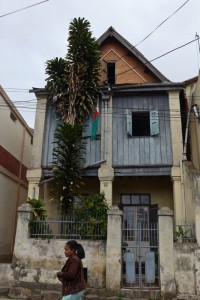 |
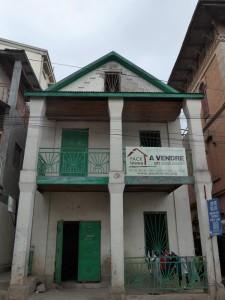 |
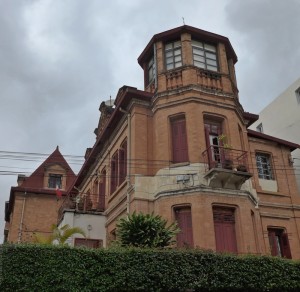 |
While I was sitting in the terrace watching sunset, I met Solofoniray Razafimahazo (Sol), our guide who has a sincere and cheerful look and a smiling face. Janet also returned from and told me she had been to the stadium which was packed and noisy. She found the music too loud and an overcrowded place scary. They left after a brief stay. Her instinct was correct: in the evening, a grenade was ignited and some people were dead. But I did not get the details.
I had dinner with Janet and my friend Joyce was taken by surprise when she saw me! She did not know I had changed to this group. I also saw a dozen new faces: I guessed most of them must be my travel mates for the coming two weeks.


